Gdańsk
As the dynamic capital of the Pomorskie province, Gdańsk offers an enticing contrast of rich history and attractive modernity. Packed with cultural and leisure options, and together with Gdynia and Sopot, forming what’s known as the TriCity, this vibrant port city stands proudly beside the Baltic Sea, offering something for everyone and a fair few surprises as well…
A City of Freedom and Solidarity
With a tradition spanning over 1,000 years, Poland’s maritime capital and one of the largest ports on the Baltic Sea is today a unique metropolis that has always been characterised by a spirit of freedom and courage. Gdańsk’s motto, the Latin saying Nec temere, nec timide, perfectly expresses the character of this former Hanseatic city; a timeless maxim that we would all do well to follow. Translated into English, it means simply: “neither rashly nor timidly”.
In the aptly named Solidarity Square, three solemn 42-metre-high crosses tower overhead with anchors attached to them. This striking Monument to the Fallen Shipyard Workers of 1970 stands right next to the European Solidarity Centre, an interactive museum recounting the Polish people’s aspirations to freedom. Theirs is a fascinating story about the long, hard fight against the communist regime, about the many sacrifices made by nations imprisoned behind the Iron Curtain and above all, about hope. Ultimately, it’s a story about their greatest victory; one that forever changed the history of Poland and, in fact, the whole world.
Right next door in the Gdańsk Shipyard, was where, in August 1980, the famous strike began that “set Poland on fire” and forced the communist authorities to make numerous concessions, including the legalisation of the Solidarity Trade Union. Gdańsk’s residents have always been courageous, have always valued their independence and, justifiably, have remained fiercely proud of their city.
One of the more recent additions to Gdańsk’s already broad educational and tourist offering is the unmistakably modern Museum of the Second World War, home to one of the biggest exhibitions on Earth related to that world-changing conflict. Situated some 14 metres underground its enormous slanted entrance, the main exhibition shows the horrors of war from many different nations’ viewpoints, as well as telling the story of the heroes of Westerplatte and the Polish Post in Gdańsk, who were the first to offer heroic resistance to the Nazi invaders.
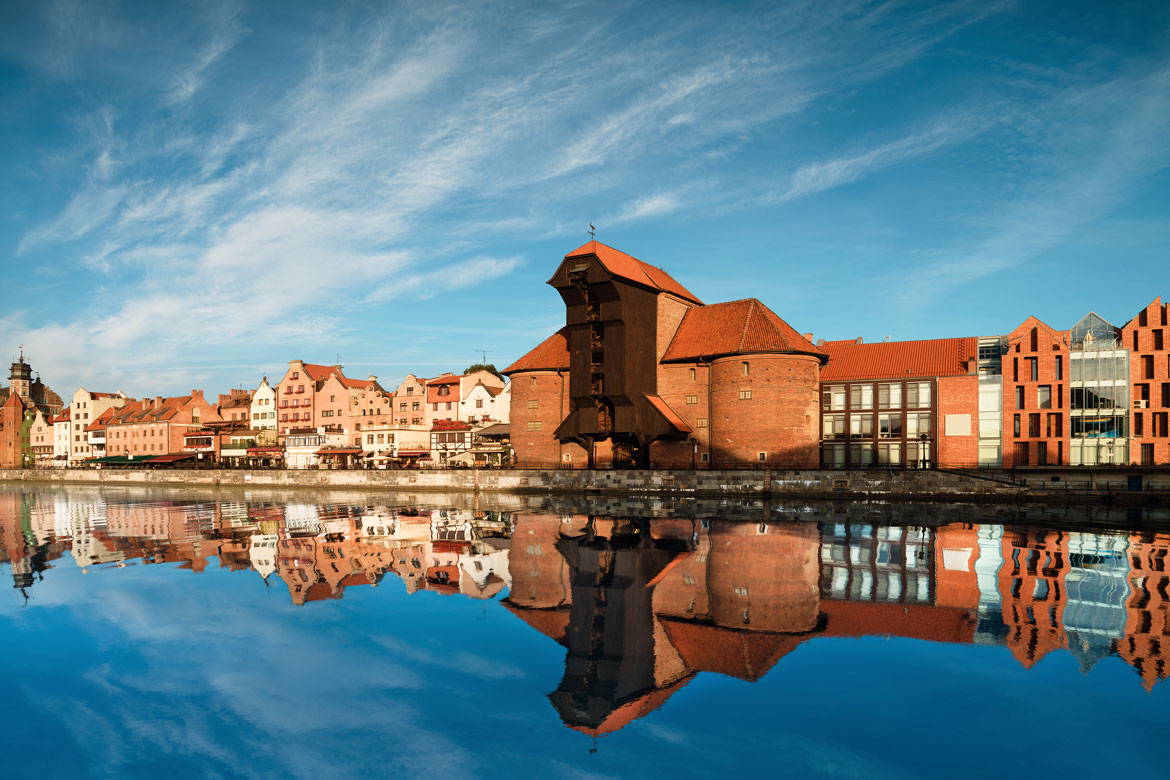
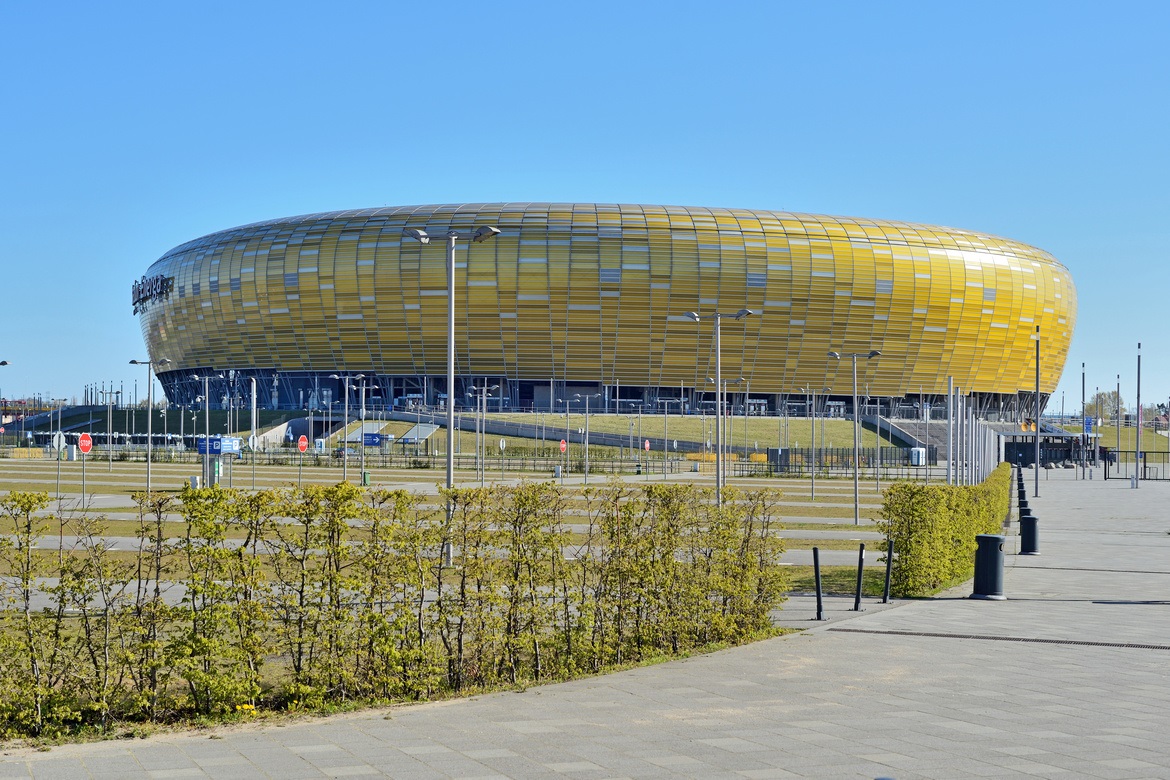
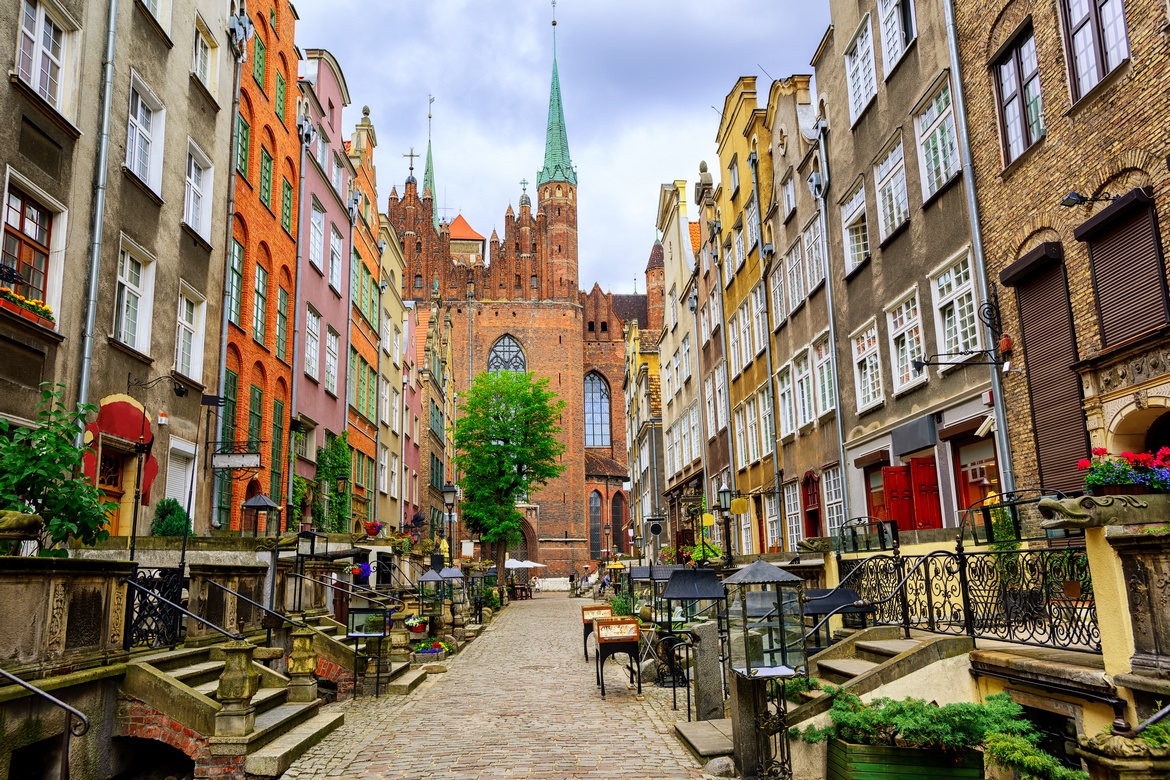
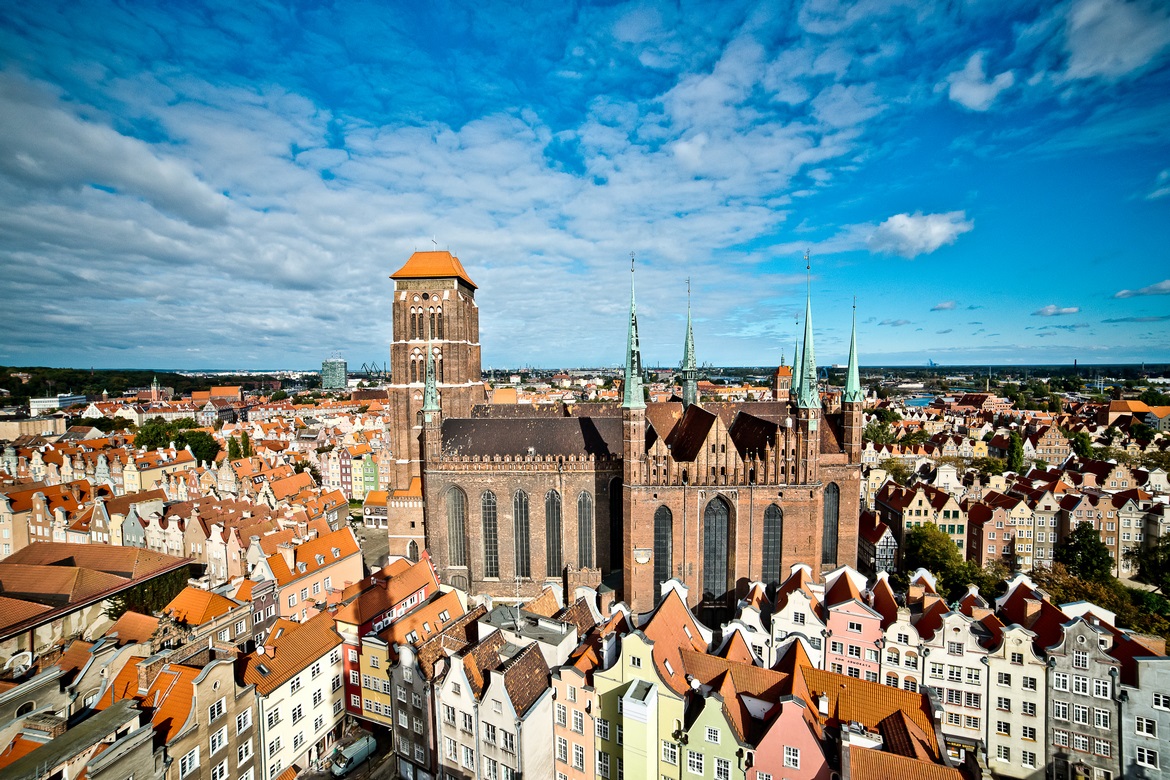
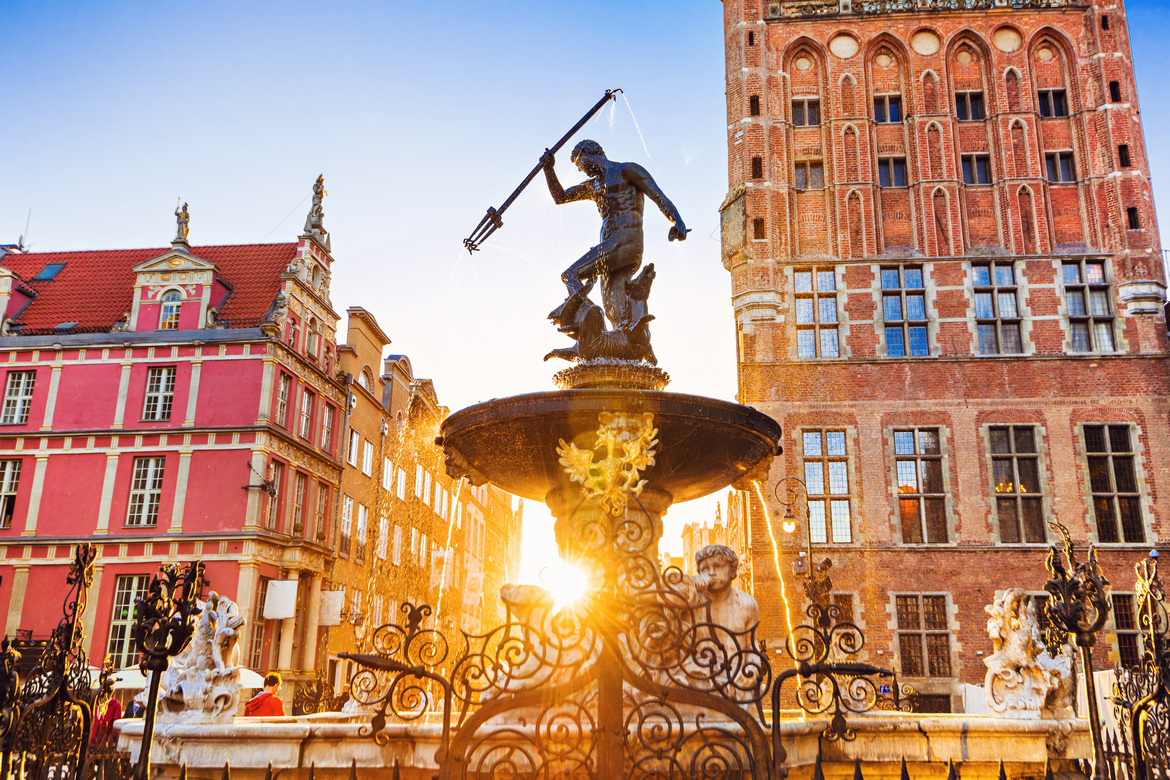
An Old Town Straight out of a Storybook
Anyone arriving in Gdańsk inevitably gravitates towards the Main Town, the city’s most historical, most popular and most important destination for locals and tourists alike. Here is where multilingual crowds of all ages take in the views across the extremely popular River Motława, as tourist boats sail past. The riverside is also dotted with tenements, including a restored Granary Island. Here you’ll find perhaps the most iconic building in the city: The Crane – the largest port crane in the whole of Europe during the Middle Ages and today part of an interesting museum.
If the Main Town as a whole can be considered picturesque, the Royal Way looks like it’s straight out of a storybook: a colourful, exquisite, vibrant promenade bursting with life and character. It officially starts from the Golden Gate, through which the city was triumphantly entered in the past before proceeding along Długa (Long) Street and onto Long Market. You can also enter at the other end through the confusingly named Green Gate – which is neither green, nor really a gate, although its Dutch-Mannerism style design is undeniably spectacular. Positively begging to be posted on Instagram, the Royal Way is composed of a few dozen tenement houses that were meticulously restored after the war. The ground floors of the buildings are home to a variety of characterful and cosy venues, including children’s favourite: the Ciu Ciu handmade sweets “factory” in Długa Street.
Standing guard like a proud, protective parent, there is the majestic tower of the Main Town Hall, which never fails to captivate all who see it, as does the nearby Neptune Fountain, Golden House and Artus Court. Standing directly behind Neptune Fountain, with its stellar and palm vaulting, many paintings and statues, Artus Court has held an important role in the city’s history: it was actually where the first Gdańsk beer was ever served, masquerade balls were held, various fraternities had their headquarters, court trials took place and even monarchs were received.
For one of the finest examples of the Brick-Gothic architecture characteristic of the Baltic coast, visit the Basilica of the Assumption of the Blessed Virgin Mary, with its turquoise spires and imposing bell tower. Inside you’ll discover clean white walls, sparse decoration and a serene, humble ambience. All attention goes to a Gothic statue of the Beautiful Madonna of Gdańsk, a Pietà and the stunning five-metre Altar of the Coronation of the Blessed Virgin Mary. Those energetic enough to climb to the top of the 82-metre tower are rewarded with breath-taking views across the city when the weather is good. On a cloudy, wet day, perhaps wiser to save your legs!
Another feature typical of Gdańsk’s historical centre that will almost certainly grab your attention are perrons; entrance terraces accessed by a small series of stairs, located above basement spaces. Along these charming cobbled streets you’ll pass by several stalls selling all manner of souvenirs, including items made from amber, Gdańsk’s true treasure: so much so, in fact that there’s an Amber Museum, which is well worth a visit. Another eye-catching building, the purpose of which is almost impossible to guess from looking at, is the extraordinarily unique Gdańsk Shakespeare Theatre, home to the famous Shakespeare Festival.
So Much More to Discover…
Here’s a fun fact for you: as many as 7,876 pipes and a multitude of moving elements can be found in the famous rococo organ in the Gdańsk-Oliwa Metropolitan Cathedral. Don’t count them, take our word for it! Either before or after visiting this famous church, take a relaxing walk around the beautifully maintained Oliwa Park, which features charming ponds, immaculate flowerbeds and winding paths. The Oliwa Stream cuts across the park, even forming a waterfall in one place. It’s the perfect spot to relax and recharge.
If you have time, it’s also worth going a little farther out to Sobieszewo Island. Birdwatching fans especially should make a point of visiting the Ptasi Raj (Bird Paradise) and Mewia Łacha (Seagull Sandbank) nature reserves on the island – don’t forget your binoculars!
No talk of Gdańsk can go by without mentioning one its greatest and lesser-known assets: the beautiful, wide, sandy beaches in Sobieszewo, Jelitkowo, Stogi and Brzeźno. Located close to numerous hotels, restaurants and bars offering live music, and all boasting modern cycle paths running along them, sport and leisure entertainment on the Baltic Sea is guaranteed here.
Families visiting with children will have great fun learning at the Hevelianum, an interactive, disability-friendly and hugely fun centre where kids of all ages can uncover many interesting scientific and historical facts – and even build an igloo! The centre is housed in the former Gradowa Hill Fort and surrounded by a fabulous 20-hectare park, offering some of the best panoramic views of Gdańsk.
Football fan? Then you simply have to visit the ENERGA Gdańsk Stadium. This unique facility, built to resemble – you’ve guessed it – a piece of amber, was constructed a year before the UEFA Euro 2012 Championship. It can seat up to 41,000 people, and was due to host the Europa League Final in 2020. The stadium also includes a leisure centre offering plenty of exciting recreational activities. The Fun Arena will be a hit with all members of the family, regardless of age!

